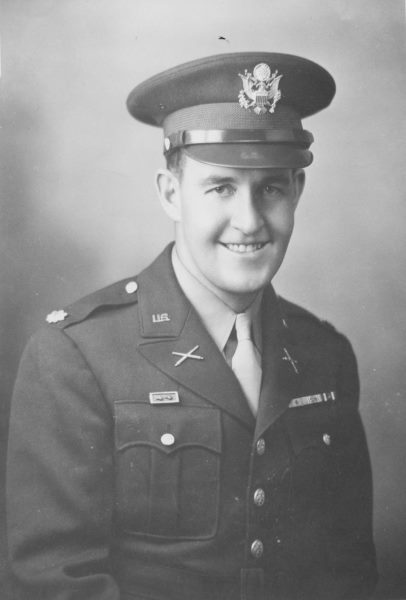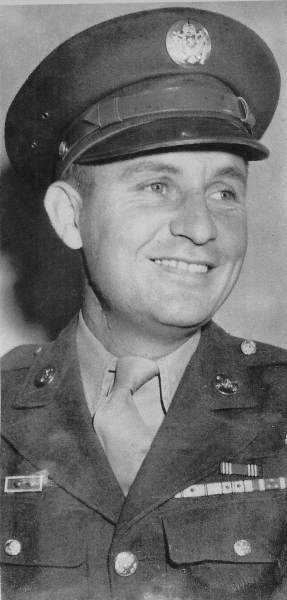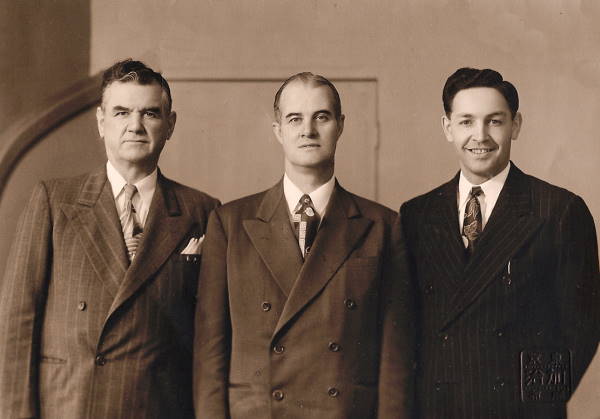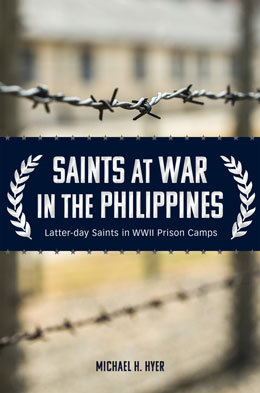Survivors
Peace and plenty here abide,
Smiling sweet on ev’ry side.
Time doth softly, sweetly glide
When there’s love at home.
—John Hugh McNaughton, “Love at Home”
Notwithstanding the warm welcomes from families, friends, and country back in the United States, life after the war was not always kind to many of the surviving Pacific POWs. There were the lingering effects of their illnesses and starvation as well as emotional scars from the horrors they witnessed and endured. Many returned home to begin their postwar life physically and emotionally devastated.
The average Pacific POW had lost sixty-one pounds in captivity, and these were men who were usually fairly lean to begin with. Roughly three-quarters of them had weighed less than 160 pounds upon enlistment. Tuberculosis, malaria, dysentery, malnutrition, anemia, eye ailments, wet and dry beriberi, and festering wounds were rampant. The hospitalization rates of former Pacific POWs for many diseases were between two and eight times higher than former European POWs.[1]
The emotional injuries, however, could be much more insidious, long-lasting, and destructive. A study of former Pacific POWs found that nearly forty years after the war, more than 85 percent suffered from post-traumatic stress disorder (PTSD) with flashbacks, anxiety, and nightmares in which they reexperienced traumas of their imprisonment in painful realism. In too many cases, these emotional injuries turned into tormented and sometimes ruined postwar lives, negatively affecting them and their families.[2]
There is no reason to believe that many of these Latter-day Saint POWs did not also suffer after the war from the effects of their imprisonment. They were not of a generation or culture that tended to write about such things, and those who wrote of their war experiences rarely made mention of these trials. Even so, many suffered.
Hamblin suffered from bouts of depression and died of cancer, determined to be service related, in 1983 at the age of sixty-six.[3] Patterson continued to be treated for schistosomiasis for most of his life.[4] Due to vitamin deficiencies, Christensen suffered atrophy of the optic nerve, resulting in degeneration in his eyesight. With proper diet and medication after the war, the deterioration stopped, but a small part of his vision was lost.[5] Hansen lost all feeling in his legs due to the effects of beriberi and was able to walk again only with great and courageous effort.[6] Late in life, Hansen also suffered from flashbacks—vividly reexperiencing the most horrible periods of his captivity.[7]
Although Rohlfing rarely spoke of his experiences as a POW, he also suffered from “night terrors,” especially after reunions with former POW companions.[8] East suffered from periodic depression and nightmares and often awoke with chills.[9] Bray suffered recurrent bouts of a skin disease he had contracted in the Philippines. He wore dentures most of his life because he lost many of his teeth due to effects of his imprisonment. Family members also learned to wake him up by gently shaking a foot; otherwise, if awakened suddenly, he would likely bolt up with his fists swinging, a remnant of his POW experience.[10]
These Latter-day Saint POWs may have endured more pain after the war than can be appreciated. It would be a disservice to their postwar accomplishments to ignore the physical and emotional trials many continued to endure. Nevertheless, while many of these POWs brought back with them physical and emotional burdens of their captivity, with personal courage, supportive families and communities, and their religious faith, many went on to live full lives, blessing their families and their church and contributing to the nation they loved.
The geopolitics are far different today than they were in World War II, with former enemies now close allies and some former allies now perceived as threatening adversaries. With the passage of time, the events of that great war recede in our collective consciousness, pushed back by the force of current events. This is especially true of these Latter-day Saint POWs in the Philippines and their families, ordinary people caught up in a trial not of their making and that would in the end prove to be of no strategic significance in the war and without any widely celebrated war heroes. Yet through this ordeal we see the faith, courage, love of country, and resilience of seemingly ordinary people and the importance of those virtues individually and as a country. They earned their place among those who some consider America’s “Greatest Generation.”[11]
The following are some brief notes on postwar stories of a few from this group of Latter-day Saint POWs in the Philippines.
Robert G. Davey
Bob Davey finally made it back to his home ward, Salt Lake City’s Cannon Ward, on October 24, 1945. His unexpected appearance at the Gleaner Jamboree turned the event into an unplanned celebration and welcome-home party. (The Gleaners was a young adult Church youth group at the time.) Not everyone in attendance appreciated this program change, however. Dorothy Jacobs, whose family had bought the Davey home during the war, had been looking forward to a different type of event. While she knew of the family, she did not know Bob Davey.
Nevertheless, Dorothy was intrigued by this new ward member. Although she thought he was good-looking, her real interest was more just student curiosity than romantic. Dorothy was then a nursing student at the University of Utah, and her professional interests were piqued by all the nutritional deficiency diseases he was known to have had. As for any possible romantic interests, she was then engaged to a sailor in the navy.
 Lieutenant Colonel Robert G. Davey. Courtesy of the Davey family.
Lieutenant Colonel Robert G. Davey. Courtesy of the Davey family.
Davey, on the other hand, immediately recognized Dorothy as the girl of his dreams—quite literally—when he first saw her at the Gleaner Jamboree. At one of the lowest points in his captivity, this was the girl he had seen in his dream, walking in and out of his family house; it was the dream that had given him the courage and faith to know he would survive imprisonment and return home and marry her. To the dismay of the sailor fiancé, two months later Bob and Dorothy were married on December 26, 1945, in the Salt Lake Temple. Just as Davey had seen in that dream, they went on to have a beautiful family.
Davey stayed in the army with postings in California, the Pentagon, and Panama; he finally retired in Olympia, Washington, at the rank of Lieutenant Colonel. He and Dorothy enjoyed a fulfilling marriage and had four children. He remained active in the Church with callings as a branch president in Panama and in the Olympia Washington Stake presidency. In 1953, shortly after the birth of his youngest daughter, Davey became sick and was hospitalized with internal bleeding. He was not expected to live, but that was not his time to die. After receiving a priesthood blessing, he lived a healthy life for another fifteen years.
In 1967 he was diagnosed with cancer and told he would die within the next six months, a death he faced with faith and courage. His daughter commented that her father often said the refining fire of prison camp had given him a strong testimony of the truths of the gospel. He died on July 19, 1968. He was fifty-three years old.
Harold B. Lee, then a member of the Quorum of the Twelve Apostles, spoke at Davey’s funeral. Referring to the scriptural passage that “he that hath faith in me to be healed, and is not appointed unto death, shall be healed” (Doctrine and Covenants 42:48), Elder Lee reassured the family that Davey was truly appointed unto death at this time.[12] As Davey had learned in a dream years earlier while sick and discouraged in a POW camp, his time to die was not in the Philippines in 1942 but in 1968, after having lived to fulfill that dream of returning home, marrying, and having a family.[13]
Orland Hamblin
 Orland Hamblin following his release as a POW in 1945. Courtesy of Hamblin family.
Orland Hamblin following his release as a POW in 1945. Courtesy of Hamblin family.
After the war, Orland Hamblin returned to Arizona and went to work for the United States Post Office, where he continued to work until retirement. He married Iona Lucinda Bright in the Mesa Arizona Temple on June 30, 1948, and raised a family of three beautiful daughters. Indeed, his daughters and grandchildren still maintain a Facebook page dedicated to preserving the memory of this quiet but remarkable man.
In his history of his experiences as a POW, Hamblin concluded, “I have always recognized the hand of the Lord in protecting me from the dangers and diseases that were constantly around me. . . . Ten years from our liberation, over 2,000 of the 4,000 who were in the Death March and were liberated had died from the effects of the march and years of imprisonment. I have very good health considering the hardships and starvation diet I endured for three and one-half years. I have a wonderful wife and three beautiful little daughters. Yes, God has been very good to me.”[14]
Orland died in Arizona on November 4, 1983. He was sixty-six years old.
Peter Nelson Hansen
Peter Nelson Hansen lost the use of his legs during imprisonment from the effects of beriberi. He spent the last one hundred days of captivity in a POW camp hospital. He was partially rehabilitated after the war, but without any feeling in his legs he always struggled to walk. A nephew recalled that on one occasion, a niece questioned whether Hansen genuinely could not feel anything in his legs. According to the nephew, “Pete [as he was known in the family] didn’t argue, he just went over to my mom’s sewing kit and took the longest straight pin he could find, about an inch long, and sat down and sunk it completely into his thigh without flinching, just to show us that he could not feel anything below the waist.”[15]
 The presidency of the Japan Mission in 1952. From left to right: Peter Nelson "Nels" Hansen, first counselor; Vinal G. Mauss, president; and Dwayne N. Anderson, second counselor. Courtesy of familysearch.org. Used with permission.
The presidency of the Japan Mission in 1952. From left to right: Peter Nelson "Nels" Hansen, first counselor; Vinal G. Mauss, president; and Dwayne N. Anderson, second counselor. Courtesy of familysearch.org. Used with permission.
Hansen was in one of the last camps in Japan to be liberated and was then detained in Manila as a witness in the war crimes trials of Generals Yamashita and Homma.[16] He was finally discharged from the army on November 7, 1946. One week later, he accepted a call to serve a mission to Japanese-Americans in Hawaii. Japan was not then open to Church missionaries, but when it was later opened for missionary work, Hansen, despite all he had suffered at the hands of the Japanese, was one of those missionaries. He went on to serve several missions to Japan. On April 13, 1952, he was set apart as the first counselor to President Vinal G. Mauss of the Japan Mission.[17]
Hansen was a remarkable Christian man. His faith and leadership proved to be a great blessing to many POWs. He never married, but he adopted two Japanese orphans, whom he supported. A nephew, with whom Hansen lived later in his life, offered the following assessment of his uncle: “The fact that he could walk was a miracle. He used that miracle to serve as a missionary for The Church of Jesus Christ of Latter-day Saints for over twenty years after the war and a few before.”[18]
Hansen died on December 12, 1981, in Weiser, Idaho.
Allen C. “Ace” Christensen
Allen C. “Ace” Christensen returned home to Tremonton, Utah. In 1947 he married Doris Farnsworth in the Logan Utah Temple and went to work for the United States Post Office. He raised a family and was active in the community and the Church, holding various leadership positions. In particular, he was the chairman of the Box Elder County Veterans Memorial Committee, which was responsible for the funding and construction of the veterans memorial on Midland Square in Tremonton, Utah. The memorial was dedicated on August 18, 2001, by President Thomas S. Monson, also a WWII veteran and then first counselor in the First Presidency of the Church.[19]
Forty-five years after his liberation, Ace was called to return to Japan, this time with Doris to serve in the Osaka Japan Mission. Of that mission, Christensen wrote, “If my first visit to Japan as a POW had been characterized by hunger, my second visit to Japan as a missionary with my wife was quite the opposite. Generous neighbors and friends kept us supplied with rice, fruit, and vegetables; they fed us as honored guests. In turn, we kept those who were spiritually hungry supplied with ‘spiritual food,’ much as I had been fed by the kind man who had once given me half a potato.”[20]
Doris passed away in 2013 at the age of ninety, survived by Ace as well as two children, seven grandchildren, seventeen great-grandchildren, and seven great-great-grandchildren.[21] Ace passed away on September 22, 2020, at the age of one hundred.
Franklin T. East
Franklin T. East survived to return home to Pomerene, Arizona, to the wife he had married just days before he left for the Philippines and to resume his life as a chicken farmer and beekeeper. His new life, however, was not without personal tragedies. With changing market conditions, his poultry business failed. His wife died in 1976 from cancer. A son died in an automobile accident with a vehicle driven by a drunk driver.
In 1985 East was examined by a social worker for the Veterans Administration. The report noted, “The patient experiences periodic combat nightmares, especially after seeing a war movie. Sometimes, he has considerable difficulty falling asleep due to ruminating about his traumatic experiences. He states that over the years he has learned to ‘put up with them’ and focuses attention elsewhere. . . . He experiences periodic depression associated with these intrusive memories. He wakes with chills about every three months.”[22]
Regarding his physical condition, the report stated that he suffered from hypertension, prostate cancer, and peripheral neuropathy with burning feet and swelling ankles. The prostate cancer and hypertension weren’t particularly unusual for a man of his age; he was sixty-nine at that time. The neuropathy may have been related to beriberi and other diseases and malnutrition he suffered as a POW. The report also noted that East had returned home to a supportive wife and church. According to the report, East stated that he had gained “considerable satisfaction from community volunteer activities, and throughout the years, this work has overridden any preoccupation with his WWII traumatic experiences.” [23]
The report noted that he had “post traumatic stress disorder which the patient effectively manages through positive activity” and that the patient “shows extraordinary personality strengths.” Since the examination was made in 1985, East had likely been suffering from the effects of PTSD for nearly forty years.
Notwithstanding the PTSD and the postwar tragedies, East had managed to live an abundant and productive life. He raised a family of four children, served as bishop in the Pomerene Ward for five years, served on the Benson School Board for twenty-six years, and worked in the Scouting program for forty years. He remarried and served a mission at Temple Square in Salt Lake City. The social worker who interviewed East closed the report by noting that additional intervention by the clinic did not appear necessary and then wrote, “It has been my personal pleasure to interview/
James Patterson
James Patterson remained in the service and later served in the United States Air Force Strategic Air Command, the group responsible for the country’s nuclear weapons. He married Cleolo Faye Richards of Magna, Utah, in the Salt Lake Temple on August 19, 1946.
After retiring from the air force, Patterson returned to the Philippines in 1986—this time not as a soldier or POW, but as a missionary to serve with his wife in the Manila Philippines Temple. He accepted with excitement this call to go back to the Philippines to serve the people where he had been imprisoned.[25]
He often spoke at firesides and other meetings about his experiences as a POW, always mentioning that special sacrament meeting and the unrolling of the flag in Dapecol on Christmas Day in 1942. He died on June 2, 2006. He was eighty-four years old. Previously, he had requested that at his funeral that scene of the sacrament meeting and the flag be reenacted. It was.[26]
Carl Dennis Rohlfing
Carl D. Rohlfing was a faithful Church member during his captivity and a close friend to many other Latter-day Saint POWs. Hamblin described him as “a fine Mormon boy.”[27] After liberation, Rohlfing arrived back in San Francisco, California, on October 15, 1945. After a few days of examination in the Letterman Hospital in San Francisco, he finally returned home to Salt Lake City on October 21, 1945, four years to the day after leaving.
In March 1946 he moved to Los Angeles to attend college; after graduation, he worked in several sales positions in California. Rohlfing had remained in the Air Force Reserve and was called up for the Korean War in August 1950. He was sent to Larsen Air Force Base in Moses Lake, Washington, where in December of that year, he contracted polio. He was in an iron lung for four months. He retired on April 1, 1951, and went to Wadsworth Veterans Administration Hospital in West Los Angeles for rehabilitation. He was there for two years. He recovered sufficiently to be able to walk with crutches and leg braces, although later in life he required a wheelchair.
In April 1953 he married Effie Cundick in the Salt Lake Temple. They had two children and seven grandchildren. Despite his imprisonment as a POW and his contraction of polio after the war, he was never a bitter man. Rather, he was known as a kind and gentle man who diligently and faithfully served his God, his church, and his fellow men his entire life until his death in 1999 at the age of eighty-one.[28]
Ralf T. Wilson
Ralf T. Wilson was the young corporal from Alta, Wyoming, who on the eve of the US surrender to the Japanese, privately knelt in prayer in a small clearing in the jungle and opened his heart to the Lord in prayer. He was promised that “it’s okay,” and that he would be “all right.” He remembered that experience and that promise throughout his captivity. He said, “Having assurance from the Lord gave me hope and confidence others did not have.”[29] With that hope and confidence, Wilson survived Camp Casisang, Dapecol, Bilibid, the voyage in a hell ship, and imprisonment in Japan. After the war, he was sent to the Madigan General Hospital at Fort Lewis, Washington. There he met Second Lieutenant Janet Ross. They fell in love and married.
Wilson stayed in the air force. Janet was not then a member of the Church, and Wilson’s church activity faded. However, while stationed in Alaska, Janet announced that she wanted to be baptized. Wilson was then challenged to get his life in order so he could perform the baptism, which he did. A little more than a year later, they were sealed in the Idaho Falls Idaho Temple. Wilson retired from the air force in 1961 while living in Redmond, Washington.
He continued as an active member of the Church, serving in various leadership positions and in the Scouting program. The Wilsons later moved to Rigby, Idaho. Ralf and Janet served a mission for the Church in New Mexico and served as ordinance workers in the Idaho Falls Idaho Temple for more than thirteen years.[30] He died in 2009 at the age of ninety-one and was buried in his birthplace of Alta, Wyoming. In addition to noting his military ranks, his obituary lists his occupation as “Scoutmaster.”[31]
Notes
[1] Laura Hillenbrand, Unbroken: A World War II Story of Survival, Resilience, and Redemption (New York City: Random House, 2010), 346–47; Daws, Prisoners of the Japanese, 384–85.
[2] Daws, Prisoners of the Japanese, 384–85.
[3] Kendall Ingleby, comment on “Orland ‘Sigh’ Hamblin Bataan Memorial March,” Facebook page, January 25, 2017.
[4] Patterson, “Interview,” 34–36.
[5] Christensen, “My Life Story,” 30.
[6] Thomas M. Fairbanks, email message to author, September 14, 2016.
[7] Thomas M. Fairbanks, email message to author, September 14, 2016.
[8] Dennis Autry, email message to author, February 20, 2017.
[9] Sam Atterbury, Social Worker, Veterans Administration, “Problem Oriented Initial Assessment and Plan for Franklin T. East,” VAMC Tucson, Arizona, April 18, 1985 (a copy provided to author by Jacob Stewart, East’s grandson).
[10] Kurt Bray, email message to author, January 27, 2017.
[11] Tom Brokaw, The Greatest Generation (New York City: Random House, 1998).
[12] Doctrine and Covenants 42:48; Marilyn Springgay, email message to author, April 23, 2017.
[13] Springgay, “Davey,” 63–64; Marilyn Springgay, email message to author, February 20, 2017.
[14] Hamblin, “My Experience,” 29.
[15] Thomas F. Fairbanks, email message to author, September 14, 2016.
[16] Ashton, “Spirit of Love,” 174.
[17] Clark and Kowallis, “Fate of the Davao Penal Colony,” endnote 29; Armand L. Mauss, email message to Thomas M. Fairbanks, September 14, 2016, forwarded to author that same day; B. L. Hinchman and Robert W. Wood, editors, The Japan Christian Yearbook: A Survey of the Japan Christian Movement in Japan through 1952 (Tokyo: The Christian Literature Society of Japan, 1953), 272–74, accessible at http://
[18] Thomas F. Fairbanks, email message to author, September 14, 2016.
[19] Program, Veteran’s Memorial Dedication, Tremonton, Utah, August 18, 2001 (copy provided to author by Cody Christensen); “Memorial Dedication is Saturday,” Deseret News, August 17, 2001.
[20] Christensen, “Two Pieces of Paper.” In addition to his personal history, accounts of Christensen’s POW experiences are as found in Robert C. Freeman and Wright, Saints at War, and Robert C. Freeman, ed., Saints at War: Inspiring Stories of Courage and Valor, (Springville, UT: Cedar Fort, 2013), 252–53.
[21] “Obituary, Doris Farnsworth Christensen,” Standard-Examiner (Ogden, UT), 4A, March 16, 2013.
[22] Atterbury, VAMC Report.
[23] Atterbury, VAMC Report.
[24] Atterbury, VAMC Report.
[25] Patterson, “Interview,” 25; Richard Patterson, email message to author, October 14, 2016.
[26] Richard Patterson, email message to author, October 12, 2016.
[27] Hamblin, “My Experience,” 15, 24.
[28] Rohlfing, “Carl Dennis Rohlfing,” 1–5; Dennis Autry, email message to author, February 20, 2017.
[29] Wilson, in Courage in a Season of War, 323.
[30] Wilson, 328.
[31] “Obituary, Ralf T. Wilson,” Post Register (Idaho Falls, ID), March 24, 2009.
